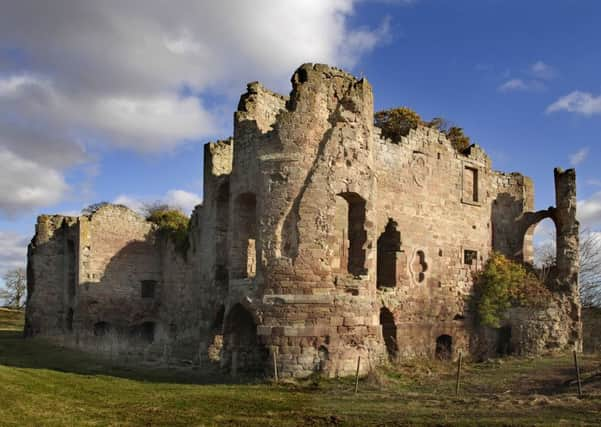The lost worlds hidden in the county's historic past


Twizell was a small and attractive Palladian mansion surmounted with an Ionic portico, which had been built in the 1790s by George Selby.
The Selby family were a power in the land in North Northumberland, and we shall meet with them again in a moment.
Advertisement
Hide AdAdvertisement
Hide AdTwizell, which can often be seen in antique prints, disappeared, or rather was demolished in the 1960s.
Less than two miles further north on the A1, at the entrance to the B6438 to Chatton and Wooler, stand some monumental gate pillars. This part of this minor highway was once the main driveway into Bellshill House.
Bellshill was built for John Pratt in about 1790, and later it was bought by another member of the Selby family. The mansion itself, surrounded by woodland, some of which survives, was demolished after the Second World War.
The search for lost houses across England is a fascinating, if somewhat depressing sport.
Advertisement
Hide AdAdvertisement
Hide AdIn 1894, the passing of a new and more effective inheritance tax, popularly known as ‘death duties’, sought to equalise the spread of wealth amongst the whole population.
As with much worthy and admirable legislation it was subject to the ‘law of unintended consequences’. So landowners who simply could not afford to maintain, or sometimes would not afford to maintain, such estates allowed their lands to be sold or broken up. Frequently the house would go first since the land might still be a lucrative form of income through farming.
So either by neglect, by fire or by deliberate demolition more than 2,000 great houses have been lost in England since 1800.
Returning to the Selby family we can encounter another house to which the name Twizell was also applied.
Advertisement
Hide AdAdvertisement
Hide AdTwizell Castle replaced a mediaeval manor house set on a bluff above the 15th century Twizell Bridge near Cornhill. The Selbys sold it to Sir Francis Blake, who began enlarging it in the gothick style in the 1770s. It was never a castle and it was never completed, but remains now a massive and romantic folly above the River Till.
But we are still not finished with the Selbys. If we strike first almost directly westwards, remaining south of the Tweed, close to Mindrum, one alights upon the formal garden and parkland of Pawston Hall. Greatly enlarged in about 1870, Pawston met its demise in relatively recent years. In 1996 it was described as a roofless ruin, but now there is no sign of the house itself.
A longer diversion to the south west takes one beyond Whittingham and Alnham to Biddlestone. Here was yet more Selby domain.
Biddlestone Hall was a house of some grandeur, built in the 1790s and altered in the 1820s by the great Newcastle architect John Dobson.
Advertisement
Hide AdAdvertisement
Hide AdDobson designed Newcastle Central Station and much of the late-Georgian centre of the city.
Biddlestone was demolished in 1957, but the Roman Catholic chapel survives. Restored by the Historic Chapels Trust, it is open on application to them.
Just half a mile to the south, beyond some woodland and in the corner of a field, is the small Selby burial ground. The Selbys also owned, for some 300 years, the famous mediaeval moated manor at Ightham in Kent.
One cannot leave this tour of lost houses without returning to the A1 and to the Haggerston estate just five miles south of Berwick itself.
Advertisement
Hide AdAdvertisement
Hide AdHaggerston Castle took its name from the Haggerston family who had owned lands in the area from the 12th century onwards.
Like the Selby family, they were recusant Roman Catholics, retaining their allegiance to Rome despite the Reformation.
Again, in the late 18th century, Sir Thomas Haggerston built a new house, which was expanded in the early 19th century. Later in the century the family, who became bankrupt through gambling debts, sold the house. The new owner, a shipping magnate, enlarged the house still further to gargantuan proportions in the 1890s. The architect was Norman Shaw, who had built New Scotland Yard in London and Lord Armstrong’s great house at Cragside near Rothbury. Building continued into the 20th century when, in 1911, a fire ravaged the building.
Rebuilt, it grew bigger still, but death duties and rising costs meant most of it was demolished in 1933.
Advertisement
Hide AdAdvertisement
Hide AdThe slender and memorable water tower by Shaw remains, with some parts of the rotunda and the stables.
Touring north of Northumberland yields much to help us understand better what shaped this most northerly part of England.
Lifestyles change and mansions are unsustainable. Some remain for our pleasure and historical interest.
Are there other forgotten houses and estates we can uncover on our doorstep?